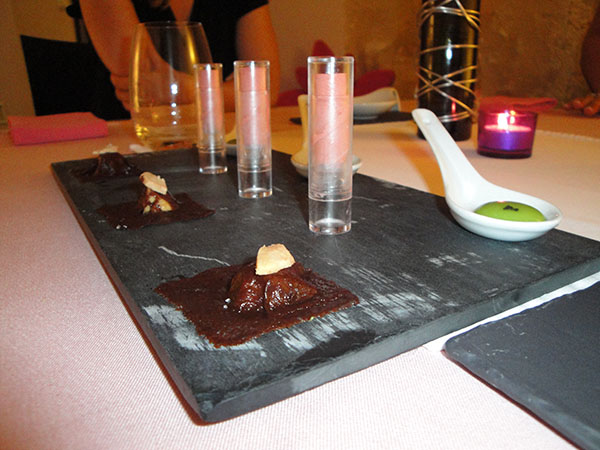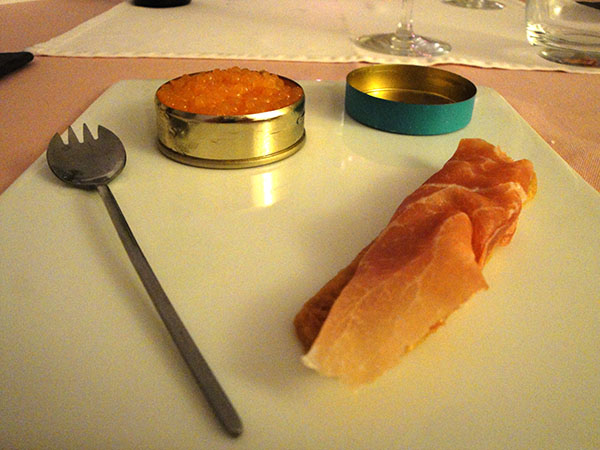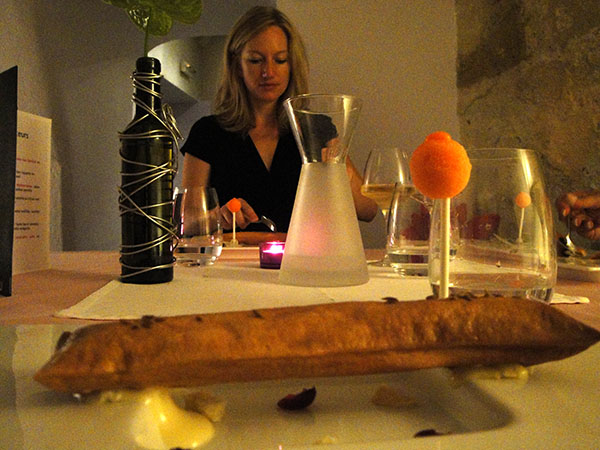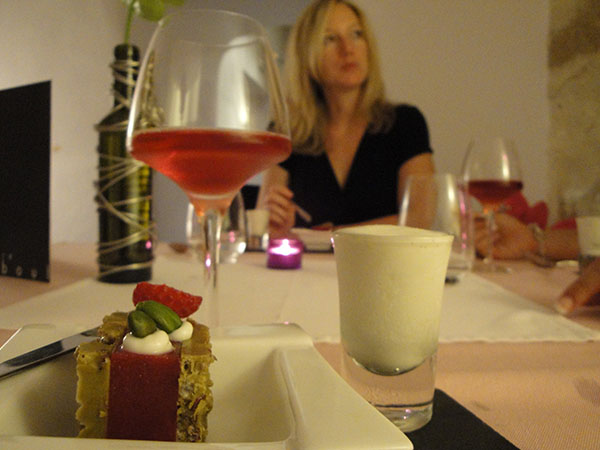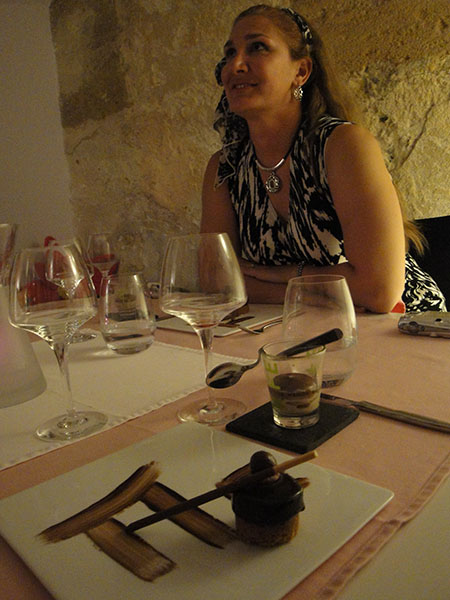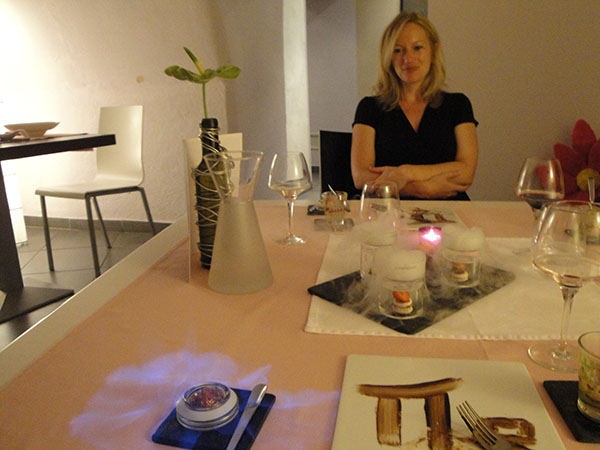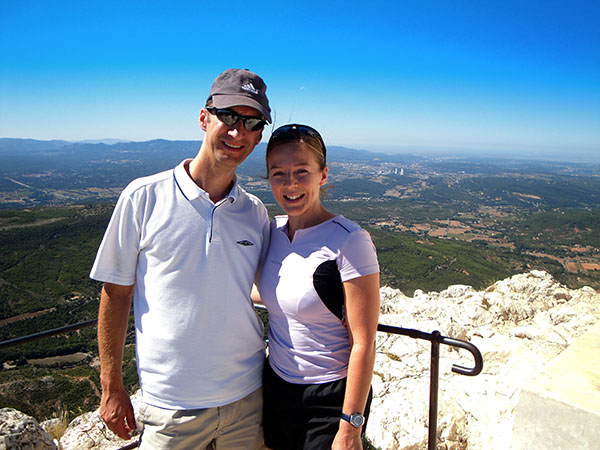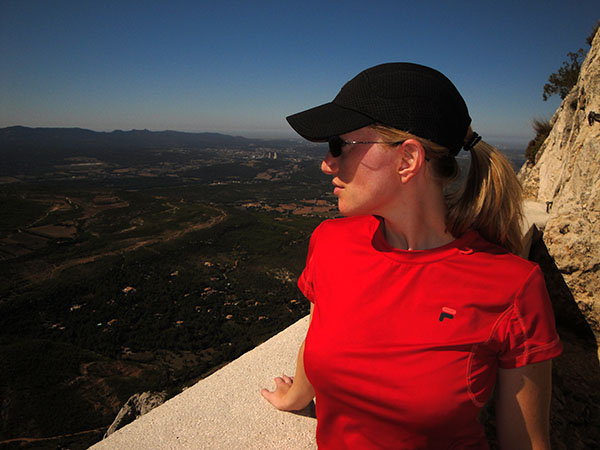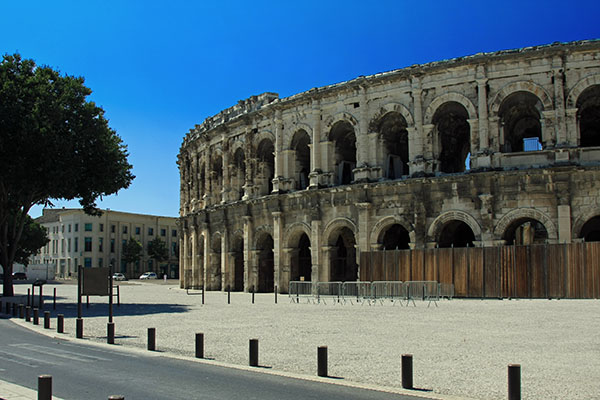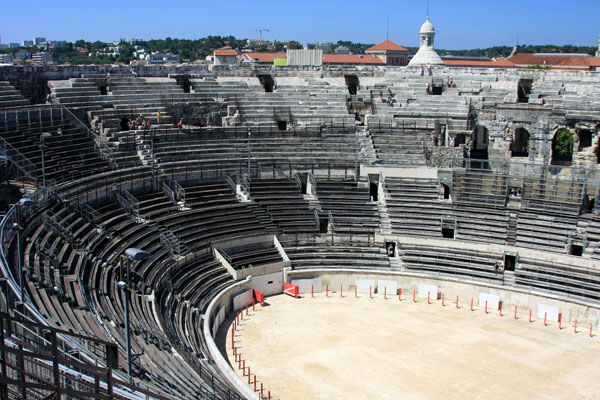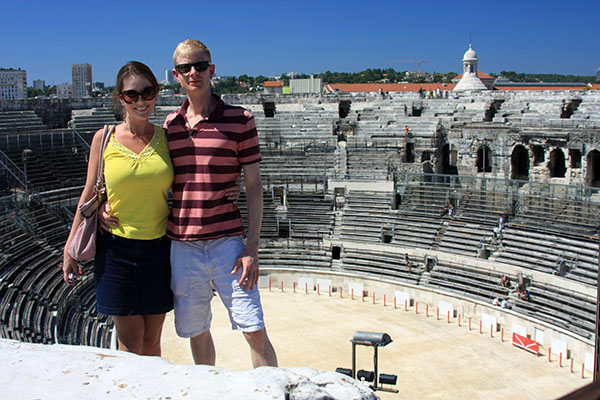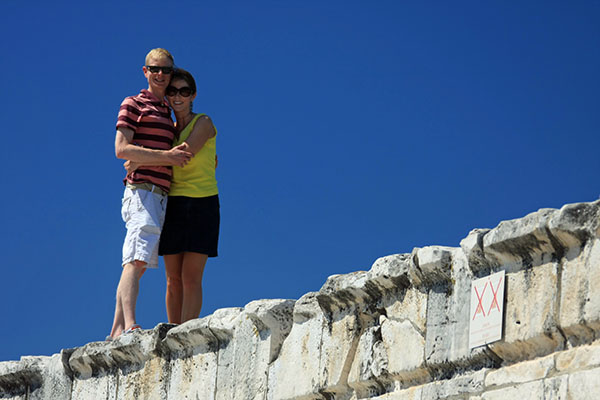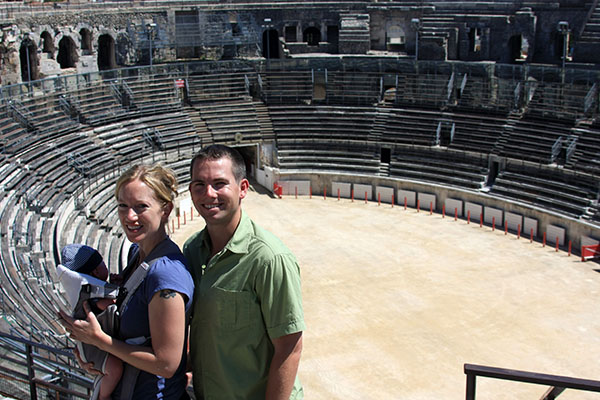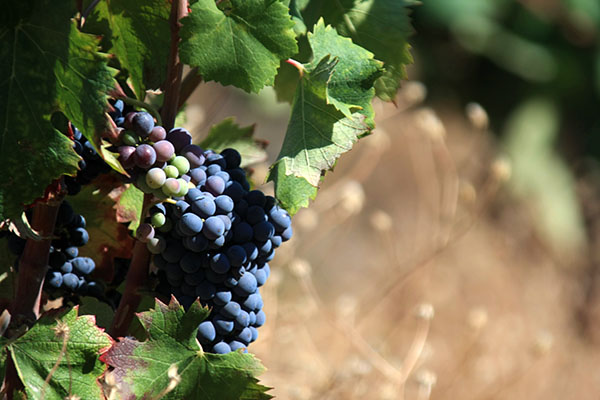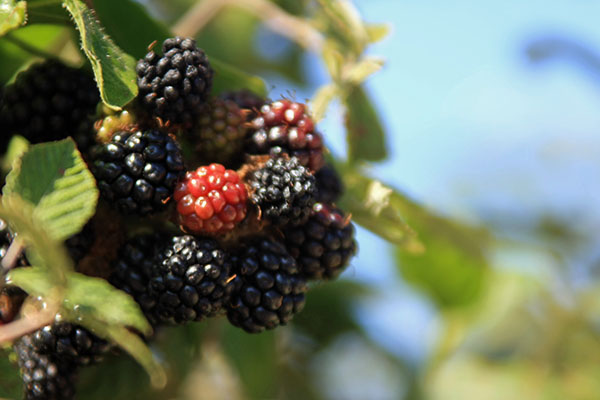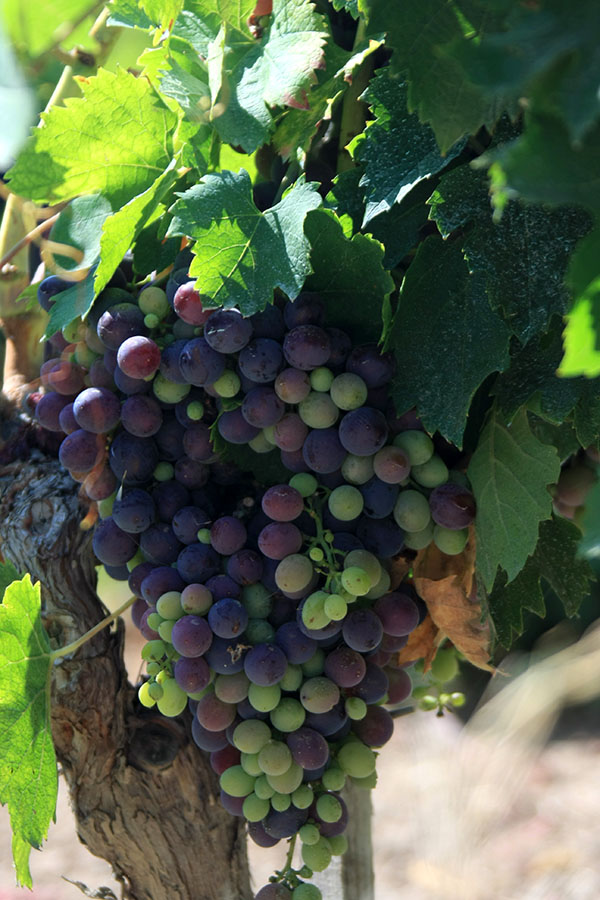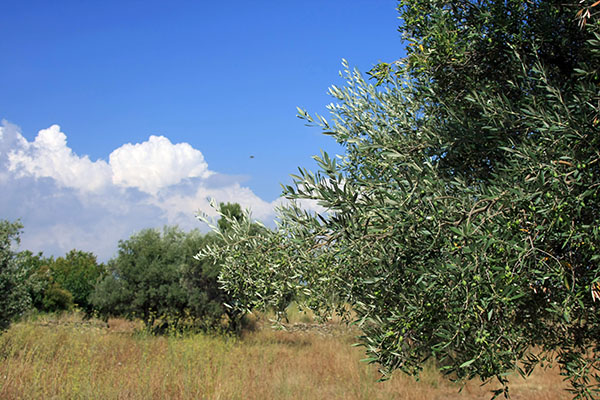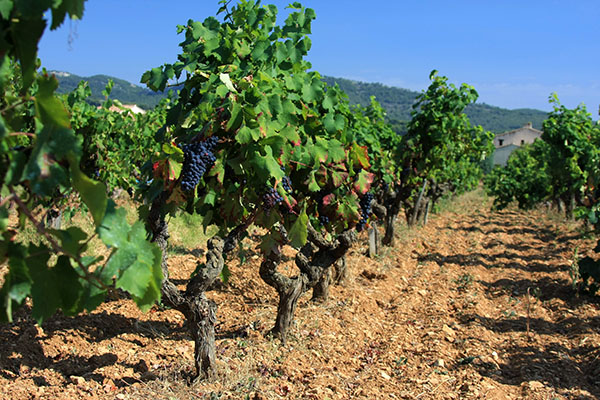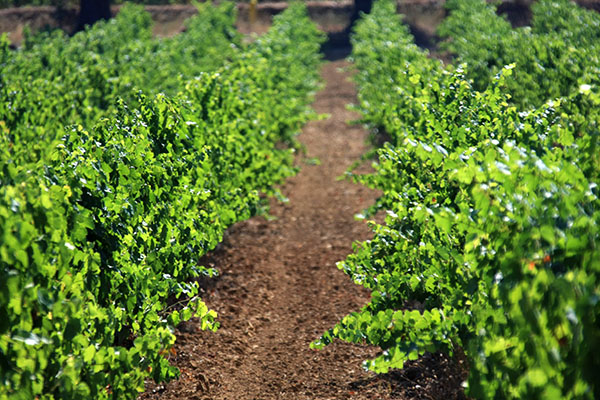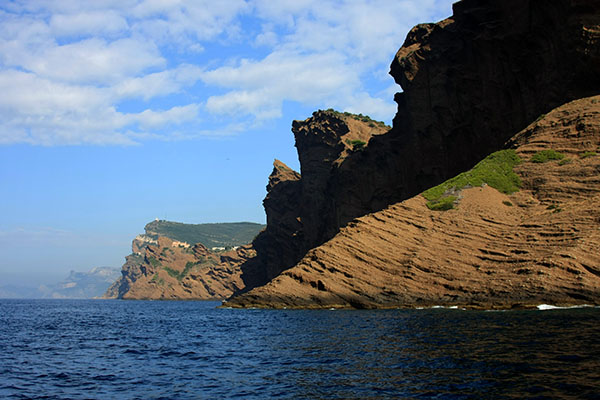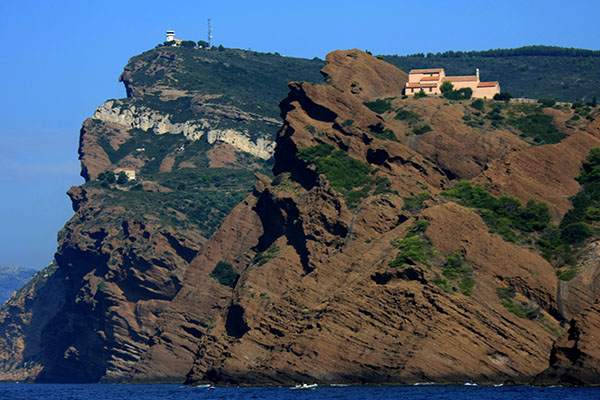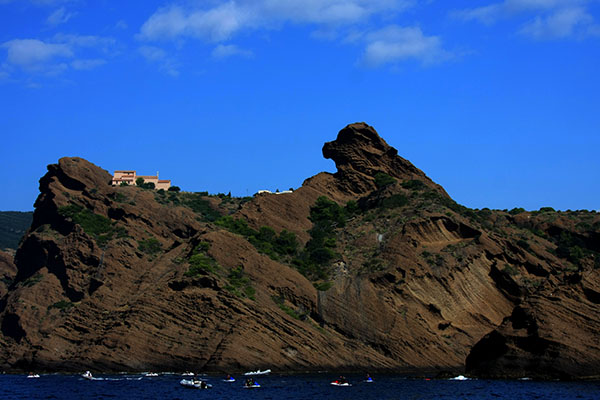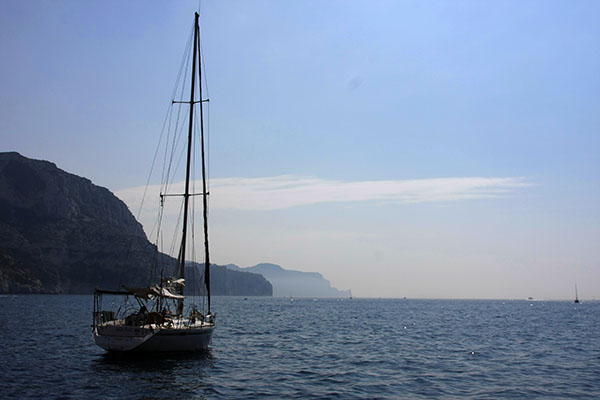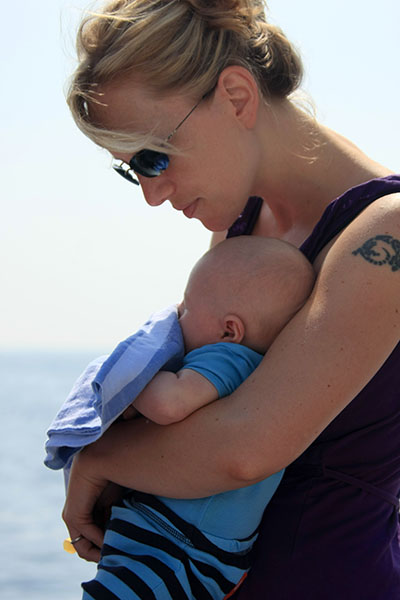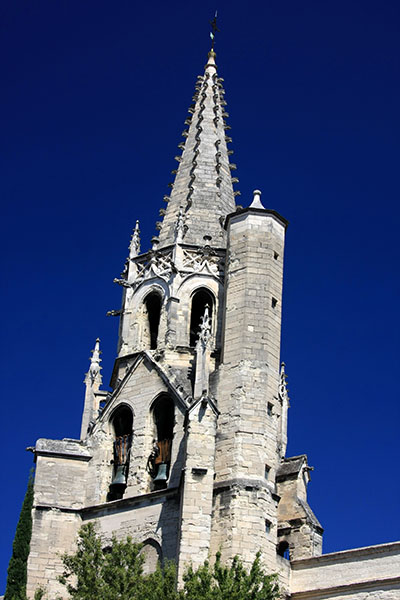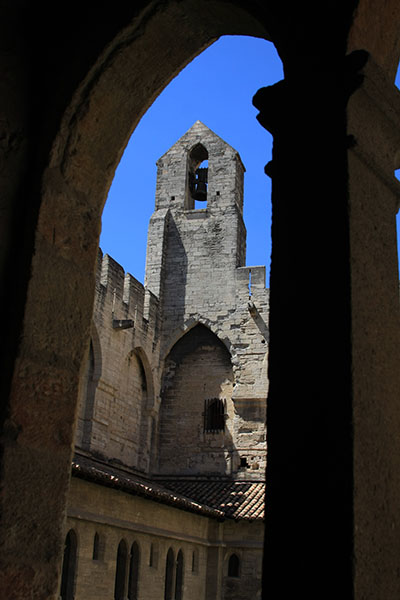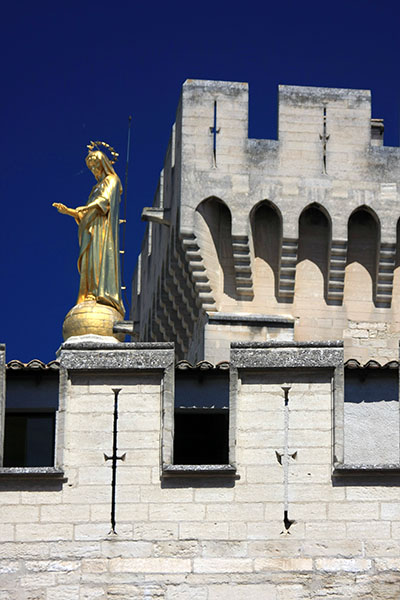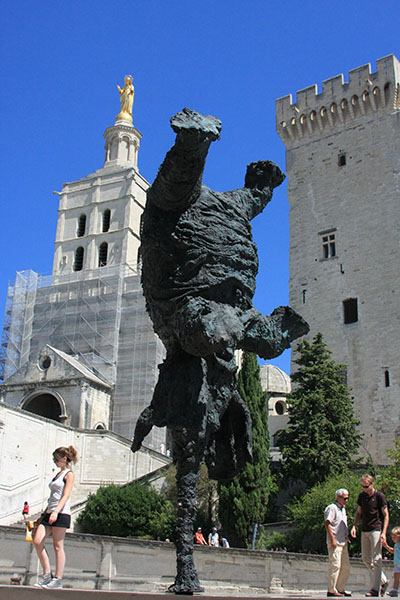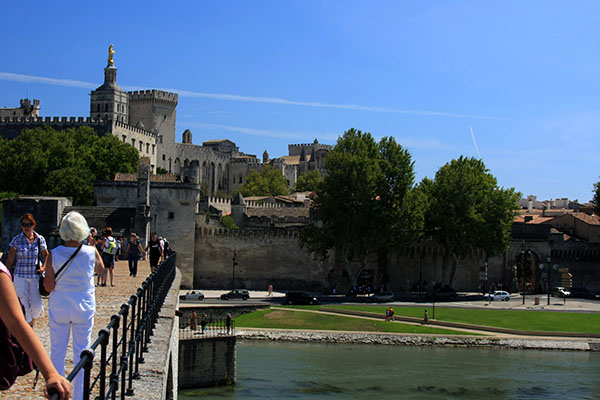Aix-en-Provence is the closest “big” city… so, we spend a lot of time there. As such, we’ve found some amazing restaurants. Our current favorite is Pierre Reboul, which we found thanks to the Michelin Guide again. This time, it was recommended as a one-star (out of a possible three, but a big deal for the Michelin Guide … only the best restaurants get a star).
Our friend C.C. was visiting for a few days, so we decided it was time to try Pierre (spelled πR, but pronounced the same). We fell in love with the place. It had such originality and amazing presentation … plus, most importantly, it was delicious!
So, I hated to be that guy, but this meal was too tasty and beautiful to not make some images. However, I used the smaller point and shoot and consequently, the image quality isn’t the best. Hope you understand and don’t hold it against me. 🙂
We chose the 7-course meal. Of course, each plate was very small, so we could actually finish it all. This was the appetizer. It looks like ravioli and lipstick, right? Actually, the ravioli is chocolate and foie gras, and the lipstick is also foie gras. Never would have guessed, and the taste … wow. Amazing.
Caviar in a tin, with some ham on the side?? Nope, a new take on prosciutto e melone. Yumm.
Lollipop with baguette? No again. This time, it’s a frozen carrot Popsicle with a crunchy, cheese filled pasty … matched with a demi-sec Champagne. Magnificent!
The wines that the sommelier paired with each course really made the experience. Fortunately, they were small pours, because the pairing was 8 glasses.
Here’s C.C. ready to enjoy her πR dessert.
This was the Fire and Ice course and was one thing that actually was as it appeared.
A little more fire from πR .
That finished our night at the best restaurant we’ve eaten at in a while (perhaps ever … but that’s debatable). We said goodbye to C.C. and a few days later, turned to the mountain that inspired Paul Cézanne.
Through an arch in the small chapel on the top of Mont Saint Victoire.
Our friends Leah and Anton climbed with us… Leah works with me, and Anton was down visiting. It was a nice climb … even X made the climb (in his carrier on my chest). Alexander was definitely the youngest on the trail that day.
Leah and Anton again.
While the mountain was Cézanne’s inspiration, here is mine.
Ok, that does it for the Aix post. Up next will be a bit of military training…
Till then…
–Jim

